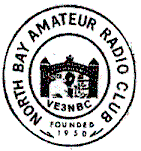RAC Bulletin 2009-11-06
Primary tabs
RAC Ontario Section Bulletin for November 7, 2009
NATIONAL NEWS
1. New RAC Executive
During a RAC Board of Directors' teleconference meeting on October
29th, the following new members of the Executive were elected: Geoff
Bawden, VE4BAW as President; Paul Burggraaf, VO1PRB as Secretary; and
Margaret Tidman, VA3VXN as Treasurer. They will assume their
responsibilities on January 1, 2010.
Subsequent to the October 29th meeting, the following Directors and
Officers submitted their resignations: Bob Cooke, VE3DBD, former
President, effective October 31; and Geoff Smith, VA3GS, former
Ontario South Director, and Noel Marcil, VE2BR, former Quebec
Director, both effective November 1st.
The remaining positions on the executive will be unchanged as the
current officers were acclaimed. First Vice-President Ian
MacFarquhar, VE9IM, will assume the duties of President until
December 31st, 2009.
The Board and Executive extend their thanks to Bob, Geoff, and Noel
for their past service to RAC and wish them all the very best in
their future endeavours.
-- RAC Bulletin Service
2. Canadian Experiments at 500 kHz authorized
After months of negotiations between RAC and Industry Canada over the
details of the licence applications and reporting conditions, the
first two licences granted to Canadians for experiments at 504-509
kHz in preparation for WRC-12 have been issued by Industry Canada.
Jack Leahy, VE1ZZ, has been assigned call sign VX9PSO in the
Developmental Service for his experimental transmissions. Joe Craig,
VO1NA, has been assigned call sign VX9MRC. Both of these stations
have been on the air already, with VX9PSO having been reported at
504.6 kHz and VX9MRC at 507.77 kHz. Signal reports can be addressed
to the operators at their call book addresses.
Two more authorizations, in Ontario and British Columbia, are
expected soon.
-- Richard Ferch, VE3KI, RAC VP Regulatory Affairs
ONTARIO SECTION NEWS
3. 2009 OPN SET Results
On October 3rd and October 7th, Emergency Management Ontario ARES
requested that the Ontario Phone Net (OPN) be activated to provide HF
Communications Support for the Simulated Emergency Test exercise.
Here are the stats from the HF Portion of the SET.
132 Individual Stations checking in, which represented
57 Ontario Municipalities, which in turn represented
30 Local ARES Groups, which included
10 Municipal Emergency Operations Centres.
35 pieces of NTS Traffic were handled.
From our perspective given the normal poor band conditons I am
pleased with the Net's Performance during this exercise. My thanks to
all who participated.
-- Bob Sharp, VA3QV, OPN Net Manager
ITEMS OF INTEREST
4. Hit and Bounce Nets
The Hit and Bounce Net (HBN) and Hit and Bounce Slow Speed (HBSN)
nets have been in operation since 1938 and 1976 respectively. HBN
meets daily on 7042 kHz (Mon to Fri) and 7114 kHz on weekends at
8:30 am ET. HBSN is daily at 7:30 am on 3576 kHz. I recently became
the manager of HBSN and would like to garner additional support of
the net on this side of the border.
Currently we have seven stalwarts in the role of NCS, but would like
to encourage increased participation. Both nets have a role as
independent wide-area nets outside the traditional NTS format, as
their timeslots take advantage of early morning propagation to
provide coverage for traffic purposes.
Average speed on HBSN is between 10 and 13 WPM, and HBN is conducted
between 22 and 30 WPM. All traffic handlers will QRS to accomodate
anyone who requires a slower speed.
-- Glenn Killam, VE3GNA, Ontario Section Traffic Manager
